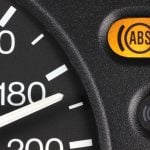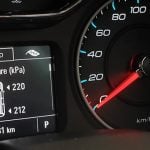A New Hampshire driver’s license helps you explore the state and its beauty without boundaries. In addition, having a valid license in this state helps you drive confidently across the state. Getting a license in New Hampshire is easy, but it is important as long as you stay here or plan to pay a visit. Also, remember to check on your license to see if you hold a valid one with the correct details. In other words, remember to renew your license on time to drive without concerns.
Not having a valid license in this state can also become a problem. You may end up paying a fine of $1200, or the DMV authorities may consider your license invalid. Hence, it is important to get a license on time, renew it, and follow the traffic rules to drive safely through the state.
Types of Licenses in New Hampshire
There are three types of licenses you can go for in New Hampshire.
Class D Operator
The Gross Vehicle Weight (GVW) of vehicles should be 26,000 pounds or less to qualify for a Class D operator license.
Class A/B/C
Class A license is for commercial driver’s licenses. Vehicles with a GVWR (Gross Vehicle Weight Rating) of 26,000 pounds qualify for a Class A license. The GVWR of towed vehicles is 10,000 pounds. Class B is for vehicles with a GVWR of less than 10,000 pounds. Class C vehicles are mostly single vehicles transporting more than 16 passengers or hazardous vehicles.
Class M
Class M is for motorcycles or other vehicles used for two or three-wheeled drives.
Documents Needed for Your New Hampshire Driver’s License
Here’s the checklist of documents you need to carry while you apply for your license.
- Original of your birth certificate and passport.
- An out-of-state license.
- Proof of accommodation.
- SSN (Social Security Number).
- Driver education course completion certificates.
Tests To Take While Applying For a New Hampshire License
As you apply for a New Hampshire driver’s license, you’ll need to take a few tests that prove your theoretical and practical knowledge.
Vision Test
The aim of having a vision test while you apply for a New Hampshire driver’s license is to check your ability to read. The ideal vision score you need to pass the test is 20/40. Also, if you wear glasses regularly, then make sure you wear them for the tests too. If you don’t pass the test, you may appear for a retest, but with a medical certificate.
Computer-based Knowledge Test
After you pass the vision test, you’ll need to take the knowledge test. This tests your knowledge of traffic and driving rules, making you eligible for a New Hampshire driver’s license. This automated test aims to check your theoretical knowledge of driving. The thumb rule is to answer the minimum number of questions within the given time limit.
You can take the test in the language of your choice. The tests are available in French, English, Spanish, Arabic, Portuguese, Parsi, and sign language. You’ll need to score an 80% to successfully pass this level. However, each time you attempt, the questions are different and random. In case you don’t clear the written exams, you can still appear for a retest in 10 days.
Road Test
The first thing you need to remember while coming for a road test is to have an inspection sticker on your car. Also, see that you come with a vehicle with all the necessary documents. In addition to this, someone who already holds a New Hampshire driver’s license needs to check your car and accompany you for the road test. Again, make sure that it belongs to one of the categories of vehicles as per DMV rules. You may take about 15 to 20 minutes to complete the test.
The road test aims to analyze your driving skills. Secondly, it also looks at your traffic management ability. Thirdly, it checks on your knowledge about traffic signals. Most importantly, it tries to understand your level of awareness of public safety. If you haven’t passed the test, don’t worry, you can appear for a retest within the next 30 days.
Checking Your Car Before the Road Test
All set to get your New Hampshire driver’s license? You need to check on a few things before you go for the road test:
- Your car must have a valid registration and insurance.
- A well-maintained windshield.
- Half a tank of gas.
- Inflated tires.
- Efficiently working doors.
- Mirror, headlights, and taillights are in good condition.
If you don’t have a car for your test, you may get one through a driving school, a friend, or a family member. However, in such situations, the owners must accompany you while appearing for the test. This is one thing to remember while applying for a New Hampshire driver’s license.
Driving Maneuvers to Note for the New Hampshire Road Test
Reverse 2-point parking: Drive across the parking space and park your vehicle back into the slot.
Stopping at the right points: Remember to stop at the pedestrian crossings and for ambulances to pass. Also, don’t overtake at intersections.
Taking a reverse: Take a reverse only at a safe distance after you look back over your shoulder. Don’t rely on the car camera at any cost.
Signals and signs: Follow the traffic signs and take turns only where you can.
Passing: Look back and in front before you pass. Most importantly, look for pedestrians and bikes.
Following: If you are behind a car, ensure that you maintain a safe distance.
You receive your temporary New Hampshire driver’s license in the mail after you pass the test within 45 days or less.
To Conclude
A valid license, renewing it on time, and adhering to the traffic rules make you a good driver in New Hampshire. So see that you carry your license while traveling to avoid paying hefty fines, and no matter which state you’re driving in, it’s important to drive safely, ensuring the safety of yourself and others on the road.

Sara Sam may not look like your typical car and finance expert, but don’t let that fool you. With over four years of experience in the industry, she knows all the ins and outs of cars, car insurance, and refinancing. You can trust Sara to help you navigate the often-confusing world of automobiles and financing.


















